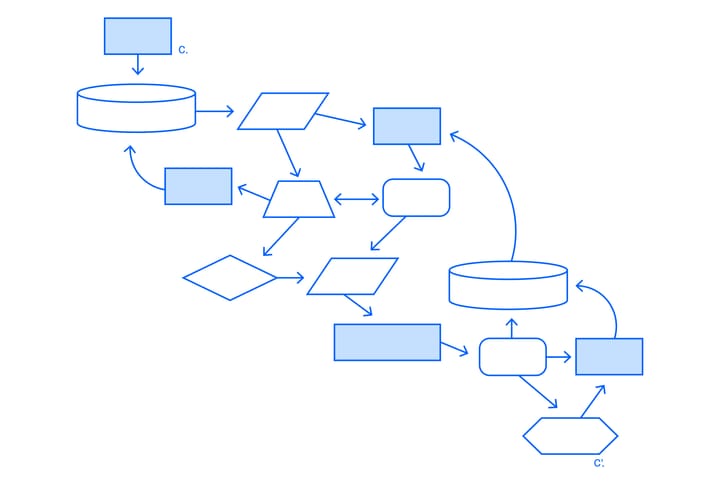The Age of Technopopulism?
According to Chris Bickerton and Carlo Invernizzi Accetti, the “populism v. technocracy” dichotomy does not help us make sense of contemporary political reality. Indeed, it is their paradoxical fusion—technopopulism—that underlies all democratic politics today.

A Review of Christopher J. Bickerton and Carlo Invernizzi Accetti, Technopopulism: The New Logic of Democratic Politics (Oxford: Oxford University Press, 2021)
A distinction between populism (as the rule of the people) and technocracy (as the rule of experts) is at this point a common one in political analysis. In broad terms, it came to the fore in commentaries on the wave of political movements that emerged around 2016, centrally Brexit and the election of Donald Trump. The distinction particularly seemed to appeal to those who saw themselves sitting towards the top of the meritocratic pyramid because it offered a thinly-veiled criticism of populist voters, who were framed as a danger to democratic norms.
In Technopopulism: The New Logic of Democratic Politics, political scientists Chris Bickerton and Carlo Invernizzi Accetti argue not only that this “populism vs. technocracy” dichotomy does not help us make sense of contemporary political reality but also that their paradoxical fusion—technopopulism—is the logic that underlies all democratic politics today. Specifically, they claim that political projects of the last 30 years (in Western Europe and America in particular) have been increasingly characterized by the synthesis of appeals to the people and appeals to expertise.
The book presents three “cases” of technopopulism: the party, the leader, and the strategy to mobilize the electoral base. Britain’s New Labour is the archetype of the technopopulist party: moving “beyond Left and Right”, in guru Anthony Giddens’ influential formulation, and looking to present non-ideological “good” policies, New Labour drew heavily on the use of pollster expertise to map the preferences of the British electorate, as detailed in Colin Crouch’s Post-Democracy. At the same time, Tony Blair deliberately lent on the language of “the people” in his political appeals; as Bickerton and Invernizzi Accetti remind us, Blair described Princess Diana—at the time of her death in 1997—as “the people’s princess”, and her funeral as “a people’s funeral.” The Millennium Dome project was referred to by Blair as “the people’s dome”, and the cause of European integration in the UK was an attempt to link up with “the people’s Europe” (43). New Labour, for Bickerton and Invernizzi Accetti, is thus an amalgam of appeals to popular objects and identities, and deeply technocratic tropes.
If New Labour is a case of “technopopulism through the party”, then France’s Emmanuel Macron is the exemplary technopopulist leader. While Blair was a figure of technopopulist transformation of the existing British Labour Party, Macron emerged outside of the established political vehicles of the Fifth Republic. Macron’s self-presentation as a “people’s problem solver”—similar to Trump’s presentation of himself as a dealmaker—is clearly grounded in a sort of practical, political expertise. In Macron’s case, this knowledge of how to get things done is blended with a direct appeal to the populace and the personalization of his En Marche party around his own brand. As Bickerton and Invernizzi Accetti put it, with Macron the technopopulist synthesis “occurs in the person of Macron himself, who is presented as an embodiment of the French people’s aspiration for political change while also construed as a competent and effective ‘doer’, possessing the necessary dynamism and expertise to deliver good policies” (5).
Finally, Italy’s Five Star Movement (M5S) is the key example of a technopopulist mobilization strategy, which seeks to move the “citizen-expert” from below. M5S attempts to use digital organizing methods as a way to crowd-source expertise and harness the electorate’s “collective intelligence”. As Bickerton and Invernizzi Accetti draw out, this form of technopopulism includes a characteristic appeal to popular expertise as legitimating the technopopulist project: “To portray one’s political project or platform as validated by ‘common sense’ effectively amounts to saying that it is: a) objectively true, or at least eminently reasonable; and b) already agreed upon by all ordinary people” (77). For the technopopulist, then, the idea that ordinary people possess a diffuse competence which can be harnessed by technology legitimates their political project. Through this mobilization it is the people themselves who become technocratically empowered.
As these examples illustrate, Bickerton and Invernizzi Accetti make the case for technopopulism as a blending of political tendencies that are often taken to be opposed. Their bold and overarching claim is that technopopulism characterizes the entire political system in the US, Europe, and beyond, which has reoriented itself to the deep structural changes of the neoliberal period. These changes have led to a yawning gap between citizens and the institutions that claim to represent them. Of course, this is a common theme in works by Crouch, Peter Mair, and others, but Bickerton and Invernizzi Accetti argue that “the categories used to describe and interpret this crisis [of democracy] have so far remained primarily negative, in that they focus on what is fading away or being actively undermined” (1), leading to accounts of post-democracy or the passing of the age of party democracy. The authors instead look to provide a set of positive conceptual categories for understanding the crisis of democracy; to describe not what’s lacking (union strength, party organization, civic associations, etc.) but what is. In their account, at the end of the Cold War, figures like Blair and Berlusconi capitalized on the collapse of the overarching ideological framework of western capitalism to promote a highly personalized form of politics that appealed to voters who had been increasingly individualized over the preceding decades and felt less attachment to traditional political vehicles and identities. The logic of technopopulism grew more irresistible during the 1990s and early 2000s, and the Global Financial Crisis generalized it across Western democracies by empowering the assorted institutions of technocratic economic governance.
One could, of course, be convinced by this basic analysis while resisting the term “technopopulism,” which uncomfortably brings together terms that we want to keep distinct. If neoliberal politicians like Blair and Macron are kinds of “populists,” what then do we label politicians like Corbyn and Mélenchon? Bickerton and Invernizzi Accetti might respond that even a supposedly anti-technocratic leader such as Corbyn was constrained by appeals to expertise—for instance in Labour’s Brexit position, which was centered around six “tests” that any Agreement had to “pass”, rather than an exercise of political judgement. Moreover, the swift adjustment of the post-Corbyn Labour Party to the leadership of Keir Starmer (the former barrister praised for his “forensic” analytical skills) suggests that the radicalization of the Party was not very thoroughgoing.
Their true challenge, however, is to suggest an essential continuity between so-called left populism and its opponents. Elsewhere I have argued that the future of left populism might lie in a moral minoritarian approach to politics, namely one that responds to the failure of left populism by advocating principles on “moral” or “progressive” (rather than majoritarian) grounds, and looks to lock-in policy achievements away from democratic contestation. This is a kind of “technocratic dogooderism”, drawing on both a charitable impulse (“to help the worst off in society”) and policy expertise to develop a programme “For The Many.” The point then is not that Corbyn and Starmer represent the same political tendency but rather that Corbynism was constrained from the beginning, in ways very pertinent to its ultimate fate, within the political logic it aimed to depose.
By presenting technopopulism as the overarching “logic” of contemporary democratic politics, Bickerton and Invernizzi Accetti’s account suggests that political conflict today is between different types of technopopulists, rather than between technopopulists and, say, conservatives or socialists. In their view, there are a number of important consequences that follow from the pervasiveness of technopopulist logic, including the desubstantialization of electoral competition, the increasing conflictuality of contemporary democratic politics, and rising democratic discontent.
Desubstantialization refers to the initially counterintuitive process through which “the outer texture of democratic politics is becoming increasingly hostile and confrontational”, while “its substantive content is being progressively marginalised” (148). In other words, concrete policy differences recede into the background as personal traits or “competence” become political battlegrounds, such that parties come to stand for “nothing in particular”, as the historian Tony Judt puts it. Increasing conflictuality is the related process by which technopopulist claims to political legitimacy, being based on appeals to an undifferentiated “people”, come to generate what the authors frame as a politics of the whole (of society) rather than the politics of different competing parts. The conflictuality is generated because each technopopulist claim is put forward as for everyone, rather for particular and competing social interests. As Bickerton and Invernizzi Accetti put it:
[T]he technopopulist logic has the effect of shifting the principal axis of political competition from the horizontal dimension of the struggle between left and right ideological poles (which are both construed as representing the interests and values of specific parts of society, and therefore equally a priori legitimate) to the vertical dimension of the struggle between the whole and the parts, in which one side of the conflict appears inherently superior. This expresses the way in which we move from an acceptance of the legitimacy of political opponents to a situation where the struggle presumes the superiority of one side over another (34-5).
In the age of technopopulism, politics becomes both highly conflictual in style but also strangely unmoored—claims about representing society as a whole mean that no specific groups have to be represented in terms of their substantial interests. The flip side of this development is a thoroughgoing moralization of politics: since all claims are claims to the superiority of a given position (rather than a recognition of its partiality), opponents are readily branded as “deplorable” or otherwise morally reprehensible. In turn, the character of political conflict is then given a hyper-real and spectacular quality; every argument is always about everything (and the arguments are largely intractable).
A third consequence of technopopulism is the exacerbation of the democratic discontent to which it is ostensibly a response. This is because technopopulism systematically avoids the material causes—growing inequality and the crisis of traditional intermediary bodies (churches, political parties, trade unions, other civil society institutions, and even the media)—that generate social malaise. Moreover a “politics of the whole”, which aims not to strengthen representative institutions but to short-circuit them by mobilizing populations directly (and often digitally), further undermines any political utility in those intermediary bodies.
What is to be done about technopopulism? Bickerton and Invernizzi Accetti believe the technopopulist synthesis is ultimately quite fragile: as it is about covering over rather than addressing the deep structural deficiencies in democratic politics, it leaves intact the material factors that render it contradictory to its core. But this is cold comfort amidst continuing social decay. The key question, which the book does not attempt to resolve, is how we should go about responding to the crisis of intermediary institutions, and whether it can be reversed. Central here is a form of representation—whether on class terms, through patronage, or a different mechanism—that can tie leaders to their constituencies in a more concrete manner, as a means of countering the free-floating politics purporting to stand for the whole of society (or “99%” of it). This would mean, amongst other things, moving away from the disintermediated populist politics of the last five years and focusing more on the regeneration of institutions that can adequately represent constituencies and memberships. This is slow and plodding work, but there is little alternative to countering technopopulism, the reigning logic of contemporary democratic politics.
■
George Hoare is one of the hosts of the global politics podcast, Aufhebunga Bunga, and co-author of the forthcoming The End of the End of History (Zero Books, 2021).



